Mexican Americans seek atonement for ancestral lands that were taken over generations
"America owes us the opportunity to take care of our own communities."
This report is part of "Turning Point," a groundbreaking series by ABC News examining the racial reckoning sweeping the United States and exploring whether it can lead to lasting reconciliation.
In some ways, what happened to Mexican Americans in the Southwest happened time and again throughout American history. Promises were made to the community, but many were never kept.
“I just don't think people get the passion that's attached to this,” said Rita Padilla-Gutierrez, whose community has lost tens of thousands of acres of ancestral land over generations. “It's the history, for God's sake. Plain and simple. Your language, your customs, your food, your traditions. But for us, it's being a land-based people.”
What we now consider the Southwest wasn’t part of the United States at all 172 years ago -- it was the northernmost part of Mexico. In 1845, the U.S. annexed Texas, which Mexico considered part of its territory. This spurred a long and bloody war with Mexico and, ultimately, Mexico ceded half its country to the U.S.
Watch the full story on "Nightline" TONIGHT at 12:05 a.m. ET on ABC
The agreement between the two countries was immortalized in the Treaty of Guadalupe Hidalgo, which gave around 100,000 Mexican nationals living in those territories citizenship if they decided to stay. More importantly, the agreement protected the rights of any Mexican whose land was now a part of the U.S.
“When Mexico negotiates the treaty in good faith, assuming that all of its citizens' rights will be respected, what it doesn't understand is that for the United States, only whites have the rights to full citizenship,” said María Josefina Saldaña-Portillo, author of “Indian Given: Racial Geographies Across Mexico and the United States.” “[Shortly after the treaty,] territorial governments systematically go about disenfranchising all Mexican citizens who they deem to not be white.”

Indeed, when the treaty was sent to Congress, the Senate removed the article that laid out the process by which the land would be protected.
In 1848, there were 154 communities in New Mexico to whom the U.S. government guaranteed land. But most of those agreements, or land grants, were never honored. Today, only 35 communities remain.
While the country prospered, the treaty would forever change the fate of generations of Mexican Americans to come.
Heirs to land that’s been owed for generations
“There's a huge disparity here in terms of poverty and [in] terms of education,” Arturo Archuleta, a land grant heir in New Mexico, told “Nightline.” “These communities have been left behind.”
Heirs like Archuleta are working to get reparations for the land that was taken from their communities, which existed long before the Treaty of Guadalupe Hidalgo was even created, according to Jacobo Baca, a historian with the University of New Mexico’s Land Grant Studies Program.
“It's beyond [a] sense of place,” Baca said. “Our identity is tied to place, but we don't see that place having an identity without us, either. So it defines us just as much as we define it.”
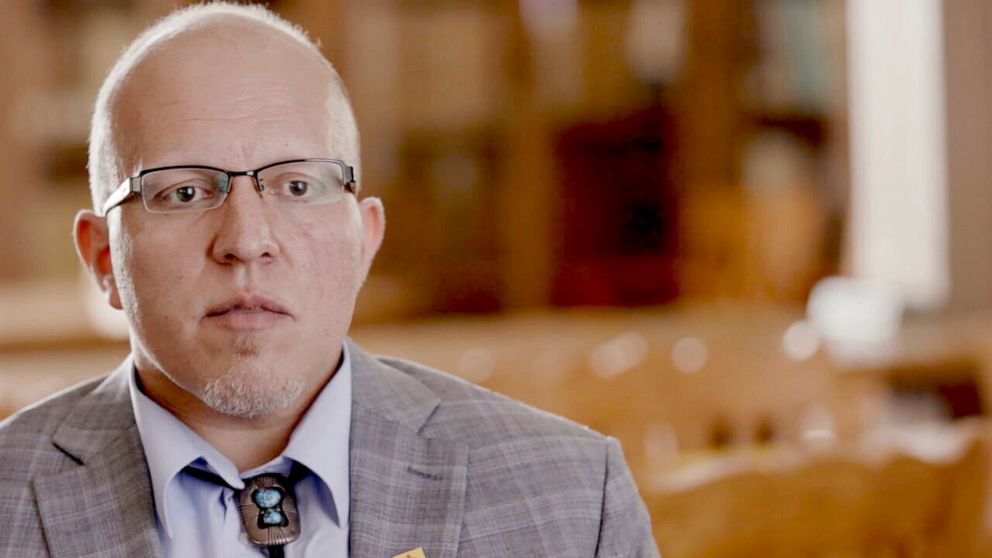
At the University of New Mexico, a collection of documents shows how a variety of land grants were vastly diminished over the years. One of the documents showed how an agreement for over 40,000 acres was reduced to less than 1,400 acres.
“I think for land grant heirs, there's this recognition that this treaty was a promise that was made that wasn't kept, and that the federal government owes the recognition of these communities,” Baca said.
Archuleta is an heir to the Manzano and the Tierra Amarilla land grants.
“We come from Spanish communities that came over, [and from] Native American communities as well,” Archuleta said. “So we really are sort of mestizo. We're mixed… We're a land-based people. Half of our soul was here before Columbus ever hit the sand.”
Archuleta says that these communities should be able to thrive where they are.
“It's not just surviving, but thriving. Our cultural connections are still in place,” he said. “The land grant and the treaty issues is probably what you consider the first Latino issue in this country, and it's still unresolved.”
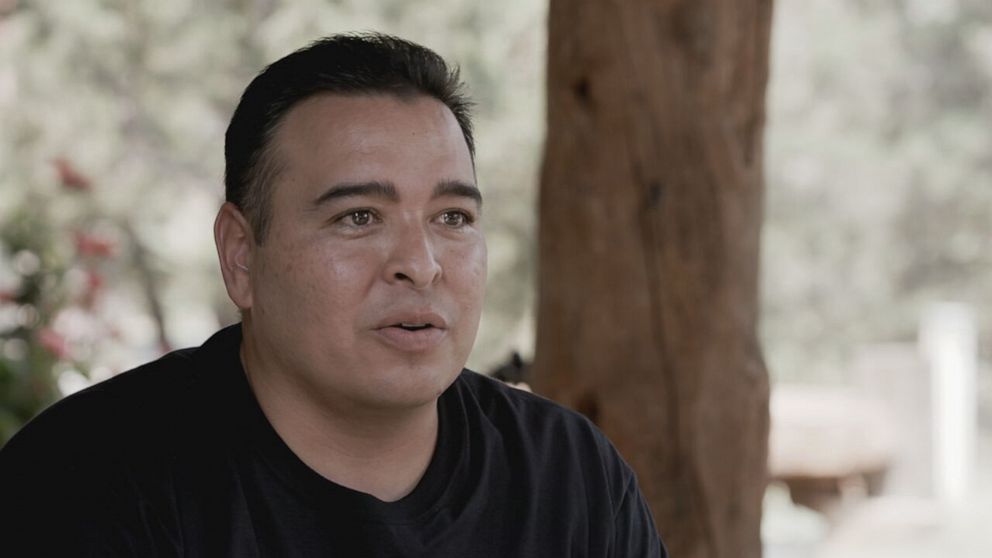
Padilla-Gutierrez’s family in New Mexico has also seen its land vanish over time. For centuries, she said the family has been living in the area near Tomé Hill in Valencia County. Now a hiking trail and site for religious pilgrims, its hillsides are filled with petroglyphs and its summit contains several large crosses.
“We have very deep, deep native roots here,” Andrea Padilla, Padilla-Gutierrez’s sister, told “Nightline.”
Padilla-Gutierrez said their land used to encompass 123,000 acres but that it has since been reduced to only 400 acres.
“America owes us the opportunity to take care of our own communities,” Padilla-Gutierrez said.

“I think regaining some of our land back would be justice,” her sister added.
The family still has the patent it was given to honor the land grant.
“It's signed by Ulysses Grant, who was president at the time -- seal and everything -- granting us that our land grant will continue to be ours again,” Padilla said. “But then later, they stole our mountains.”
The Tomé land grant lost 50,000 acres to the federal government in 1906. Like many others who held land grants, the family later had to sell their land.
“It hurt my father deeply, because he fought to the very end, telling people, ‘You can't do this. … Once you sell your land, that's it, you're nothing. You lose your culture. You lose everything,’” Padilla said.
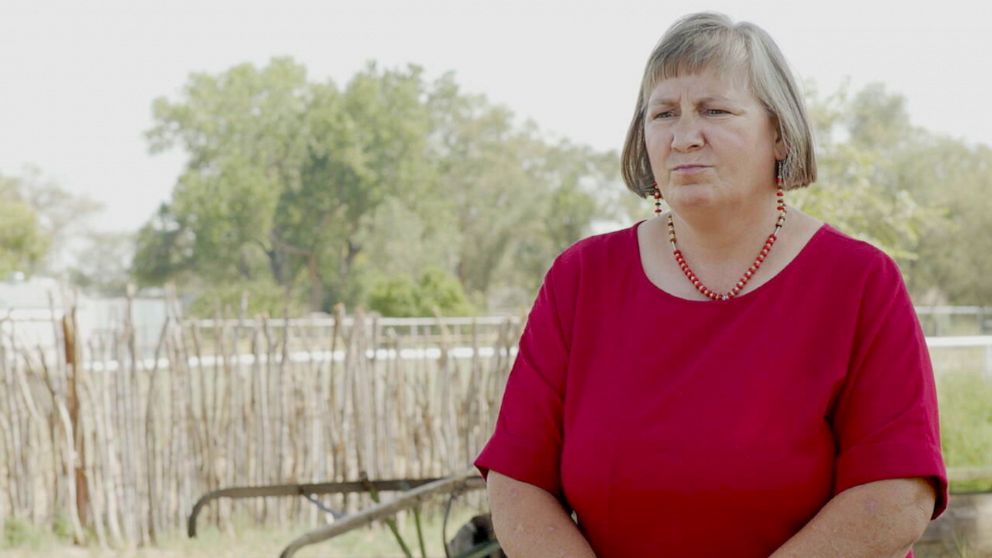
Her sister says their family’s land should’ve never been sold. The community lost more than acreage, she said. They “lost their way of life.”
The betrayal of these land grants sowed racism that still exists today
Mexican American culture has been maligned for generations, and the racism born out of that continues to be espoused at the highest levels of government today.
The president himself famously kicked off his bid for office by saying Mexican immigrants are “bringing drugs. They’re bringing crime. They’re rapists.” And as recently as June, The White House suggested that travel from Mexico was contributing to COVID-19 infections rather than states’ efforts to reopen their economies.
“It does hit me in the heart,” Padilla said. “We always worked hard... And we did the right thing. So when they talk about lazy Mexicans or, ‘These Mexicans are all drug dealers and murderers,’ I'm, like, ‘Where? I haven't seen that. I'm not [one].’ You know?”
Saldaña-Portillo says this bigotry results from Mexican natives’ land being given to white settlers.
“[It helped create] the representation of Mexicans as these barbarous Indians,” she said. “That's annunciated every day when we hear Mexicans described as rapists, murderers and thieves.”
Archuleta said he's not surprised that there's racism in the U.S. because in communities like his, racism had "never gone away."
“We've always felt it,” he said. “We've always known it. We've seen it. We've been on the receiving end of it, either through the institutions, through the bureaucracies or at the individual level.”
Juan Sanchez, a sixth-generation native of the Chililí Land Grant in New Mexico, remembers activist Reies Lopez Tijerina of the 1960s.
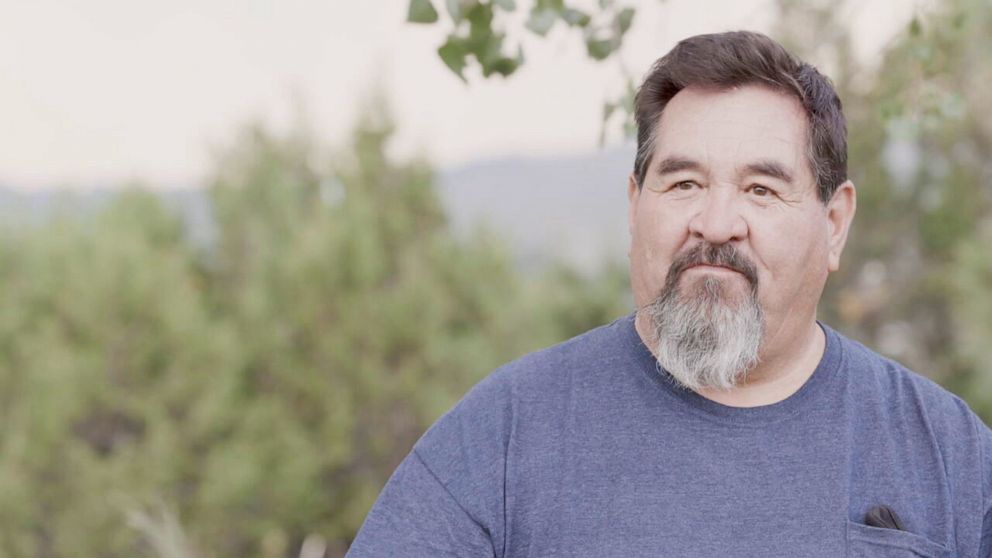
“We are called the forgotten people,” Sanchez said. “He came to New Mexico preaching the treaty and preaching and telling the people that they were gonna lose their land.”Tijerina was a major figure in the Chicano Movement of the 1960s and 1970s, which sought to reclaim Mexican Americans’ indigenous heritage and original territories.
“They were articulating it concretely, saying, ‘We have these land grants and we want these land grants honored as per the Treaty of Guadalupe Hidalgo,’” Saldaña-Portillo said.
Tijerina’s story culminates in June 1967, when he led an armed raid on a courthouse in Tierra Amarilla, New Mexico, to free imprisoned activists and place a citizen’s arrest on the district attorney who ordered a police crackdown on them.
“They were gonna go make a citizen’s arrest and so it just got outta hand from there. The frustration of not being heard just exploded,” Sanchez said. “They [had] put all the heirs of different land grants that were the followers of Tijerina in a corral like sheep.”
In the ensuing shootout, two police officers were wounded and two hostages were taken as the activists fled Tierra Amarilla. After a week-long manhunt, Tijerina surrendered. He was found guilty of assault on a federal officer and sentenced to two years in prison.
“He opened our eyes. He taught us,” Sanchez said. “He always said, ‘Change the law,’ and we've always tried that.”
For fellow land grant heir and activist Steve Polanco, this fight is personal. His family has lived on Tierra Amarilla since the late 1800s, and now in his 60s, he is the president of the Tierra Amarilla Land Grant.
“We took a stand that … the only way we were gonna be taken from here … was dead,” Polaco said.
Polaco said the original stewards of the land shared 550,000 acres and that they would help each other.
“These mountains were full of herds of sheep, herds of pigs that were being taken care of,” Polaco said. “They’d head off for the day and they’d take care of their flocks, pigs, herds of horses all over these mountains.”
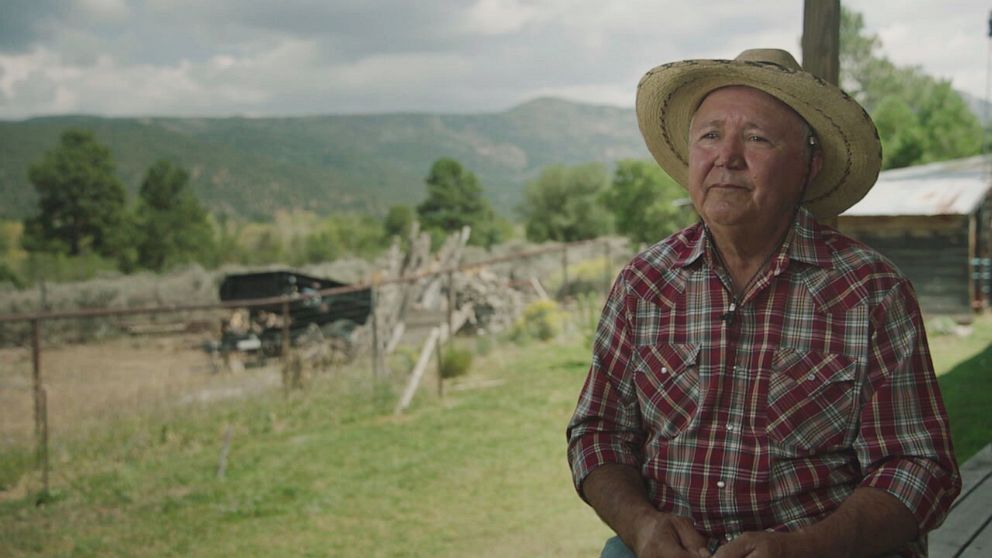
His land has been under siege for decades, he said, with outside investors hoping to develop the lands into everything from a ski resort to a landing strip, the latter of which is visible from his property.
“The building of the airstrip makes me feel really bad because, number one, they destroyed the property. It looks very ugly. It's gonna cause erosion. It’s so dry that the dust kicks up, and there's elderlies that live in the area; that dust affects them,” said Polaco.
“It's very emotional, especially when you see these outsiders coming in and doing destruction and taking advantage of us,” he said.
Today, he continues to harvest hay and attempts to keep the land as undisturbed as possible. He says he wants the Treaty of Hidalgo to be honored and the lands respected, particularly in the face of a changing climate. To that end, he said it’s important to elect public officials who “know the culture and our struggle” so that their Constitutional right to the land can be upheld.
What comes next?
Archuleta says it took generations for these communities to fall into poverty and other socioeconomic issues, and that it’ll take a long time to solve their problems as well.
“We're in a marathon. We're not in a race,” he said.
Archuleta’s grandfather is buried in Manzano, New Mexico. His dad grew up there, too.
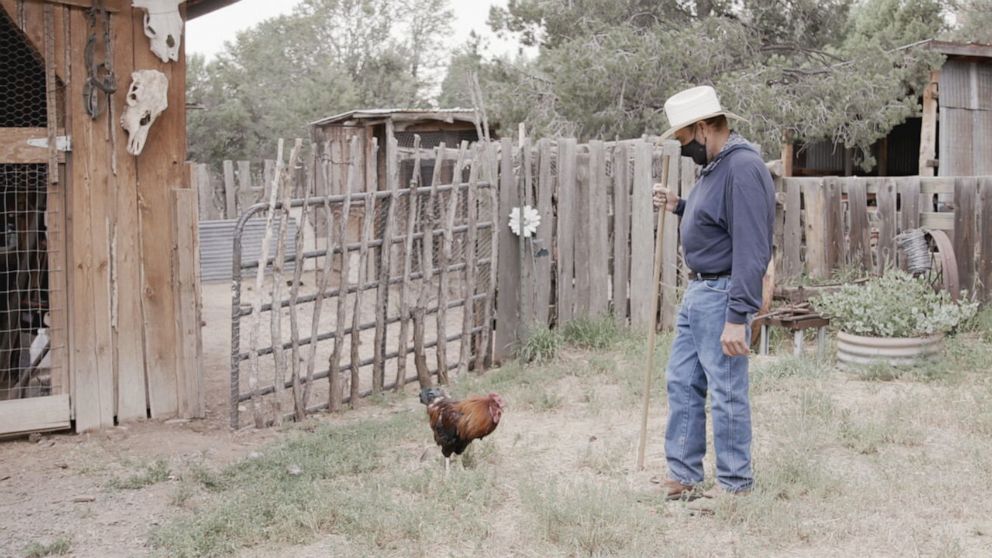
“He left in the ‘70s. He didn't have opportunities. That's the stuff that's hard to swallow when you're like, ‘Man, this is something that was in our family and it belonged to us,’” he said. "And because of circumstances beyond our control, the loss of the commons, the poverty that that created… This drives the work that I do. Working with land grant communities and trying to get justice for our communities.”
In June, Archuleta spoke before Congress as it considered a bill to give land grant heirs access to their former lands.
“What the current legislation does is it would create a federal definition of traditional uses on federal lands for land grant communities,” he said. “Access to fuelwood, for example, to heat your home. Access to pasture to graze livestock. And it would also require that the federal agencies work with land grant communities and consult with them.”
For Sanchez, “the dream of reparation would be that we'd get our land back. But we know that's impossible; times have changed.”
“Short of that, I also think our communities are due some type of reparations in terms of monetary compensation for all the hardships that they've endured,” Archuleta said. “What that figure looks like to us, if we did a calculation, probably about $2.7 billion. Not to pay out individuals but to pay our communities for community development and to buy back land.”
Meanwhile, Padilla-Gutierrez hopes to transform a historic jail in her village into a museum.
“The idea is to keep the legacy alive. Do not destroy and forget the history,” she said. “We wish that our parents could be here to see this that we've done. We're slowly inching back to being a legitimate and prideful land grant.”
Her sister emphasized that the family doesn’t “want handouts.”
“We wanna provide for ourselves. So justice would be giving us that opportunity to do that,” Padilla said. “We've always been here and we're not going anywhere… This is where we come from. This is our land and we're gonna protect it and we're gonna continue to be here as long as we possibly can.”
“The hard work of my dad and my grandfather and my great grandfather -- their blood, sweat, and tears... I have to make sure that none of that was [in] vain,” Archuleta added. . “That their hopes and dreams survive on, and [that] they survive on in my kids and their kids.”




